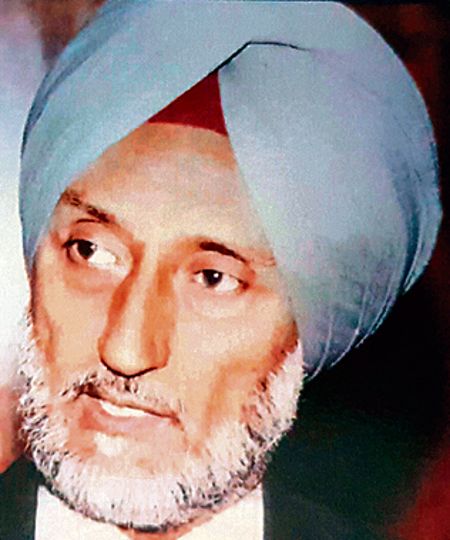With just two years of commissioned service, Capt Jamwal led the attack for the capture of Zoji La, unmindful of the odds.


HELLO, Victor 15, Gumri captured, enemy on the run, over.” This was the crisp radio message sent at 1500 hours (3 pm) on November 1, 1948, by Capt SDS Jamwal, Commander, C Squadron, 7 Light Cavalry. With just two years of commissioned service and in the manner of the 1854 ‘Charge of the Light Brigade’, Capt Jamwal had led the attack — unmindful of the odds — for the capture of Zoji La. The order for the commencement of the attack had been given to him by Maj Gen KS Thimayya at 10:15 am in the assembly area, which was about 1 km short of the pass but hidden from the view of the usurpers of Zoji La.
The presence of C Squadron in the valley had remained such a well-guarded secret that when the Stuart tanks zeroed in on Pakistani bunkers with the full force of their guns, Pakistan General Headquarters’ retort to their panicked soldiers was: “Don’t be stupid… I know those roads and bridges… no tanks can cross them. Those bloody things are probably jeeps made to look like tanks…” This vindicated Maj Gen Thimayya’s gamble born out of astute professionalism. The kinetic lethality and the tanks’ presence were so overwhelming that the follow-up combat by the infantry was ‘no big deal’.
When General Thimayya, a World War II veteran, “along with his buddy, Naik Ram Singh, walked up to our location”, about 5 km beyond Zoji La in Gumri Basin (the size of about three mega cricket fields), it was a fairly “cool joint”! But on C Squadron’s insistence, the GOC was sent back in a T16 carrier. As night temperature plummeted to minus 30-40°C, “there was one dry root of a big tree next to the Gumri rest house… drained some fuel from one tank… set the root on fire… sat through the longest night of the year!… on November 2, all commanders in the chain from Lt Gen KM Cariappa… Brig KL Atal arrived… and greeted us for the successful operation…”
The formal message from Corps Commander Lt Gen SM Shrinagesh read: “By our capture of Machoi, the enemy defences at Zoji La have been broken and he (enemy) is now fleeing towards Kargil, the magnificent part played by C Squadron… will always be remembered as the greatest achievement by tanks…. Please convey to Capt Sharak Dev Singh Jamwal, Commander, C Sqn, my warmest congratulations for his dash and boldness… the JCOs and OR… have won our admiration. Well done.”
These excerpts are from a 13-page narrative composed in 1999 by Lt Col Jamwal (retd) “to set the record straight” and reproduced in the 2022 book Treachery & Gallantry; Gilgit-Skardu-Ladakh 1947-48 by Col Ajay K Raina and Brig Rajendra Singh. The nonagenarian veteran was interviewed by the authors, and he amazed them by his “razor-sharp memory; uses no glasses or any other aid….”
On assuming command of Sri Division (present 19 Division) on May 3, 1948, Gen Thimayya had emphasised to his commanders and staff that “… the fall of Leh will be a strategic blow to India. It has to be saved at all costs…”, which also set the stage to attempt the first landing of a Dakota aircraft by Air Commodore Mehar Singh with Maj Gen Thimayya on board on May 24, 1948, at a rudimentary mud strip on the outskirts of Leh. The man behind the design and construction of the 2,300-yard airstrip, solely through manual labour, was Sonam Norbu (Leh-born but trained in civil engineering in London, courtesy Maharaja Hari Singh). When the first company of 2/4 GR (Gorkha Rifles) landed, the “Ladakhis were waiting with baskets full of grass that they wanted to feed the flying iron horses”, as narrated by Sonam to a friend.
However, the euphoria was shortlived as meteorological turbulence precluded reinforcements to Leh by air in the near future. Desperate situations demand courageous leadership and for a start Lt Gen Cariappa ordered 2/8 GR Battalion, based at Ferozepore, to despatch forthwith one rifle company to Leh via Manali. Lt Col HS Parab rose to the challenge manfully. Maj Hari Chand-led D Company (nicknamed ‘Arjun Column’) boarded a train for Pathankot on May 24, 1948, and commandeered local buses to Manali. Employing local guides subsequently, the column began a ‘forced march’ of 427 km, sans specialised clothing, and arrived at Leh on July 7, 1948.
The enemy, meanwhile, had arrived at Nimu, about 35 km from Leh, depriving Arjun Column much-deserved rest. Maj Hari Chand set about creating a mixed platoon of Gorkha and Leh militia, which went on to earn the ‘Ghost of Himalayas’ sobriquet and got him the Maha Vir Chakra.
The area from Gilgit to Skardu and Kargil to Nimo was still under enemy occupation. So, the remainder of the 2/8 battalion was also ordered to Leh. A Company (with Lt Col Parab) was airlifted from Srinagar to Leh, while B and C companies, carrying 600 extra rifles and 60,000 rounds of ammunition, were waved off from Manali on August 24, 1948, on another epic ‘forced march’, reaching Leh on September 18.
Lt Col Jamwal (retd), now 97, is probably the sole survivor from that mighty phalanx which brought the India-Pakistan war of 1947-48 to a conclusion. He deserves appropriate recognition at the national level.
Postscript: When Maj Gen Thimayya landed at Srinagar on May 3, 1948, to assume command of Sri Division, accompanying him was a filmmaker, Serbjeet Singh, who filmed the capture of Zoji La and made a documentary, Liberation of Ladakh.
